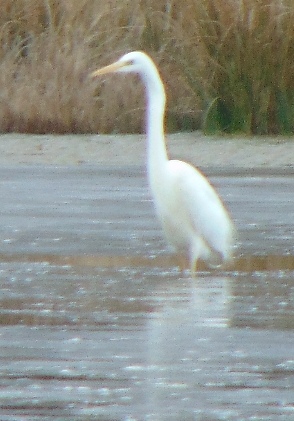Modern cookbooks make no mention of it. Old cookbooks often contain a wealth of information. If you can read it. And understand. I made several attempts.
Grilled heron
 Henri de Toulouse - Lautrec saved his most lavish hedonism for food and drink: hunting with cormorants and serving heron, squirrel and lethal cocktails to dinner - party guests.
Henri de Toulouse - Lautrec saved his most lavish hedonism for food and drink: hunting with cormorants and serving heron, squirrel and lethal cocktails to dinner - party guests.
One of Lautrec's more ambitious recipes calls for a heron to be grilled over a vine- wood fire but, as you know, you just can not get the heron these days, not even in Harrods Food Hall."
'The Art of Cuisine’ by Henri de Toulouse - Lautrec and Maurice Joyant (Holt, Rinhart and Winston)
Heron Rosted - England, 15th century
Original receipt:
Take a heron ; lete him fearful as a crane, And serue him in all poyntes as a crane, in scalding, drawing, and kuttyng the bone of the nekke a- wey, And lete the skyn be on, & c,. Roste him and sause him as The Crane; breke awey the bone fro the kne to the foté, and lete the skyn be on. His sauce is to be mynced with pouder or gynger, vynegre, & Mustard.
Roast capon or heron
The oldest Dutch printed cookbook of which a copy exists, appeared around 1514 in Antwerp by publisher Thomas van der Noot. The cookbook was published anonymously.
" A notabel boecxken of cokeryen " (A notable book of cookery) contains 175 recipes that are largely taken from existing recipe bundles, amongst them one in Paris around 1490 printed edition of the Viandier.
To make Heroen Sause of ten capuinen that one witht feet roasts after Eastern.
(Interpret, a little readable) Take crumb of bread and make it fine with a few wine and vinegar and save it through a sieve. Then shalt thou dilute with wine and vinegar together and doing in it much saffron, lots of cinnamon and ginger, but that she is bright yellow. And is it that you want, put in diminutive peppers and put in lard [= fat] of the Heron. Was also heron too skinny, one would then same heron with other lard dripping and then do more that lard in the sauce and let them seethe [= simmer] until it is thick enough and also thickened.
Heritage Library Hendrik Conscience also has a wealth of information about the daily life of 350 years ago. The book demonstrates that the kitchen of the 17th -century richer bourgeoisie experienced international and modern recipes.
Some preparations mention forgotten ingredients like ‘verjuice ' (see <Vinagar>), the recipe for Spanish stew calls banned products such as starlings and herons.
“I also can cook” (edited by the HMSJ Holl, 1911) Crake, moorhen, plover, sandpiper, lapwing and snipe are unsure about their lifes. " Finally, a word about the heron, which is not protected by the hunting laws, but instead incredibly vigilant and wary. The hunter managed it a few times in the early morning to surprise and put down a sleeping stilt-walker. Except that his head ornament is very expesive, the flesh also has some value, especially the young heron chest delivers as minced, prepared with onions and peppers, an excellent dish. "
 The Blue Heron (Ardea cinerea) is gray. He has a white head with a broad, black eyebrow stripe and black wing tips. The male and the female look about the same. He is 90 to 98 centimeters tall, up to 2 kilograms and up to 25 years old. The wingspan can reach 155 to 175 cm.
The Blue Heron (Ardea cinerea) is gray. He has a white head with a broad, black eyebrow stripe and black wing tips. The male and the female look about the same. He is 90 to 98 centimeters tall, up to 2 kilograms and up to 25 years old. The wingspan can reach 155 to 175 cm.
He flies with slow wing beats and short glides. The neck is then typically s -shaped folded and the legs stab behind the body.
The adult wader eats about 330 grams per day. This comprises for one third of fish and the rest of larvae, dragonflies and small rodents such as voles and moles. Apparently he can to impale with his dagger beak take exactly the refraction of light in water into account. He swallows his prey in one take!
This protected species is solitary, but nests in colonies. The nests are built high in the trees. The incubation period for their 3 to 5 blue-green eggs is about 23 to 28 days. Both male and female brood. The young remain in the nest about 50 days.
Most waterfowl fat their feathers with parson's nose oil. With herons the preen gland (at the base of the spine) is shriveled . They use powder puff pads on the chest and on the sides of the rump. The points of the powder down feathers go on setting to powder and grow again. They share it with their beak and a " polish claw": the claw of the middle toe with a special serrated edge.
